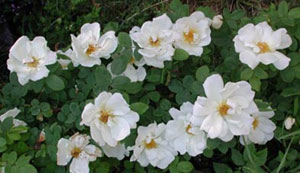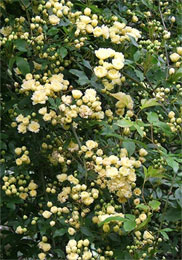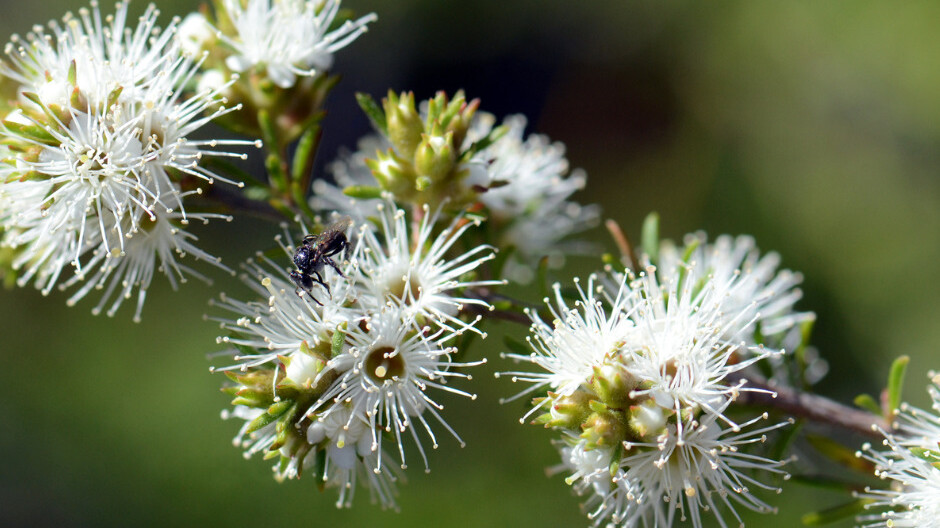
An abridged version of an article supplied to SGA by Barry W. Johnson of Hearts Content Horticultural Services.
Roses are an internationally renowned garden mainstay and form a huge part of the commercial horticultural world. As I also have a long history as a rosarian, my brief is to emphasise that sustainable gardening principles can be applied to rose culture as much as to any other genera or cultivars.
Aren’t Roses High Maintenance?
No, not necessarily. If you intend to grow roses to win prizes at a rose show, you may have to treat them like a Harley Davidson. But if you just want to grow them for a pleasant garden display, you will find them quite hardy subjects.
As a general rule, the modern cultivars such as the hybrid teas, miniatures etc. may require a little more attention to detail to produce optimum results, but most of the other classes will still perform adequately by the employment of sustainable garden practices. In actual fact, there has been a worldwide trend by rose breeders and growers to produce modern, disease resistant, floriferous, and easy-care shrub roses.
Roses and Friends
In addition, many of the Species and Old Garden Roses will tough it out quite well with our beloved natives so long as they can get off to a good start and they are not thrown into terra too-firma. Good soil preparation is really a vital ingredient of planting out any plant, roses being no exception.
Any companion plants to be included with roses should have two basic characteristics: a deep, non-fibrous root system; and a non-blanketing foliage canopy. Companion plants having both these traits should allow the rose to establish properly and live harmoniously with its neighbours. The problems associated with having to compete in close proximity to another plant’s overly voracious root system is obvious, but the reason roses do not like being covered by blanketing leaves is heavy over-shading. This robs the rose of this sunlight which in turn can cause poor vigour and die-back.
A certain amount of investigation and discrimination should be employed when selecting companion plants you are trying to intermingle with roses. Roses require at least 50% of sunlight per day so I’m sure any rose is going to have trouble living under the canopy of a large dense canopied tree like Melaleuca linariifolia for example, not to mention the hunger and thirst of its root system.
I also advise that, if possible, the planting out of the roses prior to, or at the same time as your larger companion shrubs and trees to enable the rose to get a good start. Obviously, if you intend to plant roses in proximity to established companion plants you will have to rejuvenate the soil in the planting zone and get them off to a good start.
When The Going Gets Tough
If your preference leans toward an arid or extremely low maintenance garden, then Species roses and their near relatives would be the obvious choice. Although there are no native Australian roses, species roses and their near-relatives originate from a wide range of habits spanning from the far north of the northern hemisphere to Africa & Middle East, eg. Rosa acicularis (Arctic Rose) and Rosa foetida persiana (Persian Yellow Rose). True species and their near-relatives like the Gallicas, and Spinossissimas are a good starting point in tough rose selection. Note though that R. rugosa is an environmental weed.

Some suggested species to try would be:- R. foetida, R. banksiae lutea (Banksia Rose, pictured left), R. brunonii, R. officinalis, R. complicata, R. Tuscany Superb, R. rubifolia, R. hugonis, R. moschata, R. moyesii ‘Geranium’, R. mutabilis, R. nitida, R. ‘Irish Rich Marbled’, R. roxburghii, R. scabrosa, R. ‘Blanc Double De Colbert’, R. sweginsowii. Add to these many of the Damasks, Albas, Centifolias, Mosses, and Portlands, and you have quite a range to choose from.

In addition to these there are a number of shrub roses that are tough and reliable, such as, ‘Angela’, ‘Fruhlings Gold’, ‘Fruhlingsmorgen’, ‘Golden Wings’, ‘Nevada’ (pictured at top), ‘Postillion’, ‘Red Mozart’, ‘Red Wand’, ‘Rosendorf’, ‘Sparrieshoop’ (pictured right), ‘Scarlet Fire’ and ‘Typhoon’.
Better Roses & Less Water
Sustainable gardening practices only start with smart and investigative plant selection. Preparing the growing site with good water retentive composted soil is a pre-requisite. After plant-out, the application of quality mulch, such as lucerne, pea straw, pine bark etc. is a must. In fact, anyone with a garden not practising a mulching regime is probably already living in a desert or near-desert of hydrophobic (water repellant) soil and dead or sad plants. Hydrophobic soils can be rewetted by products such as ‘Saturaid’ and ‘Wetta-soil’. In a typical Aussie summer I apply liquid wetting agents at least twice.
In addition to soil preparation and mulches, if the disposition of your residence makes it logistically possible to channel grey water from your bathrooms to the garden, this would be a free, cost effective way of supplementing water.
Rain water catchment tanks and plant-sited, pressure compensated drip emitters are also good choices when it comes to smart water usage.
Oh! Bugger
Roses for all their value, beauty and attraction have many admirers including some bugs. My advice regarding dealing with these little suckers and blighters is to do so in an environmentally responsible manner. Within reason, we should live by the principles of Integrated Pest Management (IPM). IPM means learning to tolerate a certain level of aphids and caterpillars etc. in your garden, and not rushing off to the insecticide cupboard and then rushing out to nuke them as soon as one appears. A mindless ‘ground zero’ approach to pest control will only serve to kill or deter all the useful predators such as Lady Bird, Praying Mantis, Silver Eye etc. If you have the luxury of time aphids can be squashed by hand or blasted off by hose. There are even fine water jet wands available for this purpose.
If you have an infestation occurring then I would suggest spraying with a low-toxic Pyrethroid contact spray or one of the new generation synthetic sprays such as ‘Confidor’ which are systemic and one application will generally kill the whole cycle.
Caterpillars, Katydids and the like are best controlled by living by the old adage of actually taking the time to ‘smell the roses’ by going on garden patrol giving them the non-carcinogenic ‘roll your own’ treatment ie. between the thumb and fore-finger.
I’m Really Just a Fungi
There’s nothing funny about a garden full of fungal disease and roses are one plant that can succumb to a decent dose of Black Spot or Powdery Mildew. The first rule of thumb in your prevention strategy is the previously-mentioned at least 50% sunshine per day rule. (Refer to our information pages on Black Spot of Rose and Powdery Mildew.
Next would be to use disease resistant cultivars similar to the ones previously mentioned. The third part of the equation would be to water your roses in the cool of the morning. I believe that the less stress your roses are under, the less susceptible they will be to disease. For example, if the day is going to be about 40°C it is far better to give your plants a drink and a cooler root run under the mulch prior to the heat rather than after, as they will be under less stress during night time and therefore able to cope better being a bit thirsty than during the heat of the day.
Secondly, by watering at night you would be creating the perfect micro-climate for fungal spores to propagate and race around the garden ie. damping down foliage and the garden environs in the cool of the evening. Bad enough when it rains at night, than you simulating this every time you water.
Conclusion
Many of the SGA principles I have applied to roses can also be applied to many other exotic cultivars together with a liberal application of common sense.
Related Articles:
Wildflower gardens – What’s the buzz about?
In the quest for sustainable and environmentally conscious practices, gardening enthusiasts and nature lovers alike are turning to a time-tested…
Why Living Trees Suddenly Fall Down
It is quite common that in winter or after big storms we wonder why living trees suddenly fall down. In June 2021 in Victoria, savage storms swept…




